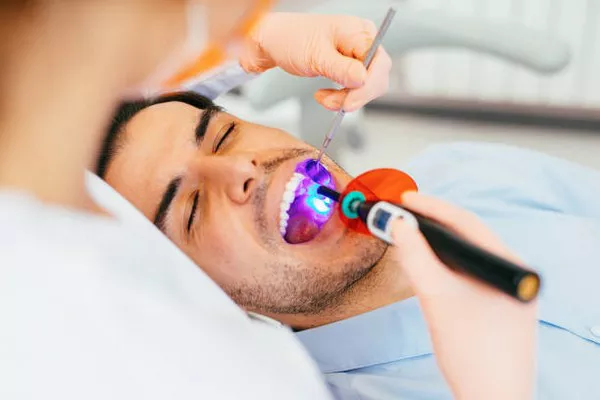Orthodontic treatment, including braces and clear aligners, can significantly improve dental health and aesthetics. However, the cost of these treatments can be substantial, making insurance coverage a critical factor for many patients. This article provides a comprehensive guide to understanding orthodontic insurance, covering what it typically includes, age and treatment restrictions, coverage details, deductibles and copays, distinctions between cosmetic and necessary treatments, additional coverage options, navigating insurance claims, and the importance of consulting with insurance providers.
Basics of Orthodontic Insurance
Orthodontic insurance is a specialized component of dental insurance plans designed to cover treatments that correct misaligned teeth and jaws. Coverage often includes:
Traditional Braces: Metal braces are the most common and typically the most covered type of orthodontic treatment.
Clear Aligners: Products like Invisalign are also frequently covered, though to a lesser extent than traditional braces.
Retainers: These are often covered as part of the overall orthodontic treatment plan.
Palatal Expanders: Used for younger patients to widen the upper jaw.
The extent of coverage can vary significantly between insurance plans, with some plans offering substantial support for orthodontic treatment and others providing minimal coverage.
Age and Treatment Restrictions
Age Limits for Coverage:
Many dental insurance plans impose age restrictions on orthodontic coverage. It is common for policies to cover orthodontic treatments for dependents up to a certain age, typically 18 or 19. Some plans, however, offer coverage for adult orthodontics, though this is less common.
Treatment Restrictions:
Insurance plans may also restrict coverage to specific types of treatments. For example:
Necessary vs. Cosmetic Treatments: Necessary treatments to correct functional issues like malocclusion are more likely to be covered than purely cosmetic upgrades like ceramic braces or lingual braces, which are more aesthetically pleasing but often more expensive.
Pre-existing Conditions: Some policies may not cover orthodontic treatment for conditions that existed before the insurance policy was in effect.
Coverage Details
When evaluating orthodontic insurance coverage, it is essential to understand key policy details:
Waiting Periods:
Many insurance plans have a waiting period before orthodontic coverage kicks in, which can range from six months to two years. This period is intended to prevent individuals from enrolling in a plan solely to get orthodontic treatment and then canceling once treatment is complete.
Pre-Authorization Requirements:
Insurers often require pre-authorization for orthodontic treatments. This process involves submitting a treatment plan and cost estimate from your orthodontist to the insurance company for approval before starting treatment. Pre-authorization ensures that the treatment is covered under your plan.
Coverage Percentages:
Insurance plans typically cover a percentage of the cost of orthodontic treatment, often ranging from 50% to 80%. The exact percentage can vary based on the plan and the specific treatment being received.
see also: Is Orthodontics Covered By Medicare
Deductibles and Copays
Deductibles:
A deductible is the amount you must pay out-of-pocket before your insurance begins to cover costs. For orthodontic treatment, this can range from a few hundred to a few thousand dollars. Understanding your deductible is crucial for budgeting the overall cost of treatment.
Copays:
A copay is a fixed amount you pay for each orthodontic visit after your deductible has been met. This can be a significant ongoing expense, particularly for treatments like braces, which require regular adjustments and check-ups.
Cosmetic vs. Necessary Treatments
Insurance policies often differentiate between cosmetic and necessary orthodontic treatments:
Necessary Treatments:
These treatments are deemed essential for oral health and proper function. They include correcting malocclusions, severe overcrowding, and significant bite issues. Necessary treatments are more likely to be covered by insurance.
Cosmetic Treatments:
Cosmetic treatments are those that primarily improve the appearance of the teeth without a significant impact on function. Examples include:
Ceramic Braces: Less noticeable than metal braces but more expensive.
Lingual Braces: Placed on the back of the teeth, making them invisible from the front.
Clear Aligners: Such as Invisalign, which are removable and less visible.
While these treatments can be appealing for aesthetic reasons, they may not be covered by standard insurance policies or may only be partially covered.
Additional Coverage Options
If your primary insurance does not provide sufficient orthodontic coverage, there are additional options to consider:
Supplemental Insurance Policies:
Some insurance companies offer supplemental dental insurance policies that specifically include orthodontic coverage. These can be added to your primary insurance plan to increase overall coverage.
Riders:
A rider is an add-on to your existing dental insurance policy that provides additional coverage for specific treatments, such as orthodontics. Adding a rider can increase your premiums but can also significantly reduce out-of-pocket costs for orthodontic treatment.
Discounted Dental Networks:
Some organizations and membership programs offer access to discounted dental networks, where participating orthodontists provide services at reduced rates. While these networks do not provide insurance coverage per se, they can substantially lower the cost of treatment.
see also: How Orthodontic Elastics Work
Navigating Insurance Claims
Successfully navigating the insurance claim process for orthodontic treatment involves several steps:
Pre-Authorization:
Begin by submitting a detailed treatment plan and cost estimate from your orthodontist to your insurance provider for pre-authorization. This step ensures that the treatment is covered under your plan and prevents unexpected out-of-pocket expenses.
Filing Claims:
Once treatment begins, your orthodontist will typically file claims on your behalf for each visit or phase of treatment. It’s essential to keep detailed records of all treatments and communications with both your orthodontist and insurance company.
Appeals Process:
If your claim is denied, you have the right to appeal the decision. This involves providing additional documentation or clarification about why the treatment is necessary and should be covered under your plan. Be persistent and keep detailed records of all correspondence during the appeals process.
Conclusion
Orthodontic treatment is a significant investment in your oral health and overall well-being. Understanding the intricacies of orthodontic insurance can help you navigate this process more effectively, ensuring you maximize your coverage and minimize out-of-pocket expenses. By understanding the basics of orthodontic insurance, age and treatment restrictions, coverage details, deductibles and copays, the difference between cosmetic and necessary treatments, additional coverage options, and how to navigate insurance claims, you can make informed decisions about your orthodontic care. Always consult with your insurance provider and dental professional to tailor your treatment plan to your specific needs and coverage.
FAQs About Braces and Orthodontic Treatment
1. How much are the cheapest braces?
The cost of braces can vary significantly based on location, type of braces, and the specific needs of the patient. Generally, the cheapest braces are traditional metal braces. Here’s a rough estimate of costs:
- Traditional Metal Braces: $3,000 to $7,000
- Ceramic Braces: $4,000 to $8,000
- Lingual Braces: $8,000 to $10,000
- Clear Aligners (e.g., Invisalign): $4,000 to $7,500
These prices can fluctuate based on the complexity of the case, duration of treatment, and additional costs such as retainers and follow-up visits. It’s advisable to consult with an orthodontist for an accurate estimate.
2. What does comprehensive orthodontic treatment mean?
Comprehensive orthodontic treatment refers to a full-course treatment plan designed to correct a range of dental and jaw alignment issues. It includes:
Diagnosis and Planning: Detailed examination, x-rays, and impressions to create a customized treatment plan.
Active Treatment Phase: The period during which braces or aligners are worn to move teeth into the desired positions. This phase can last from 12 months to several years, depending on the complexity.
Retention Phase: After the active treatment, retainers are used to maintain the new position of the teeth and prevent relapse.
Comprehensive treatment addresses all aspects of dental alignment, bite correction, and jaw position to achieve optimal oral health and aesthetics.
3. Is it too late to straighten my teeth?
No, it is never too late to straighten your teeth. Orthodontic treatments are effective for adults as well as children and teenagers. Many adults seek orthodontic care to improve their smile, oral health, and self-confidence. Modern orthodontic treatments, including clear aligners and ceramic braces, offer discreet options for adults concerned about the appearance of traditional braces. Consult with an orthodontist to discuss the best treatment options for your needs.
4. Can you get free braces over 18?
Obtaining free braces for adults over 18 can be challenging, as most public health programs and insurance plans typically cover orthodontic treatment only for children and teenagers. However, there are a few options to explore:
Dental Schools: Some dental schools offer reduced-cost treatments performed by supervised students.
Insurance Plans: Check if your dental insurance plan offers any coverage for adult orthodontics.
Payment Plans: Many orthodontists offer flexible payment plans to make treatment more affordable.
Non-Profit Organizations: Some non-profits may provide financial assistance for orthodontic treatment to those in need, although these programs are often limited and may have specific eligibility criteria.
It’s important to research and consult with local orthodontic providers to explore all available options.
You Might Be Interested In






























